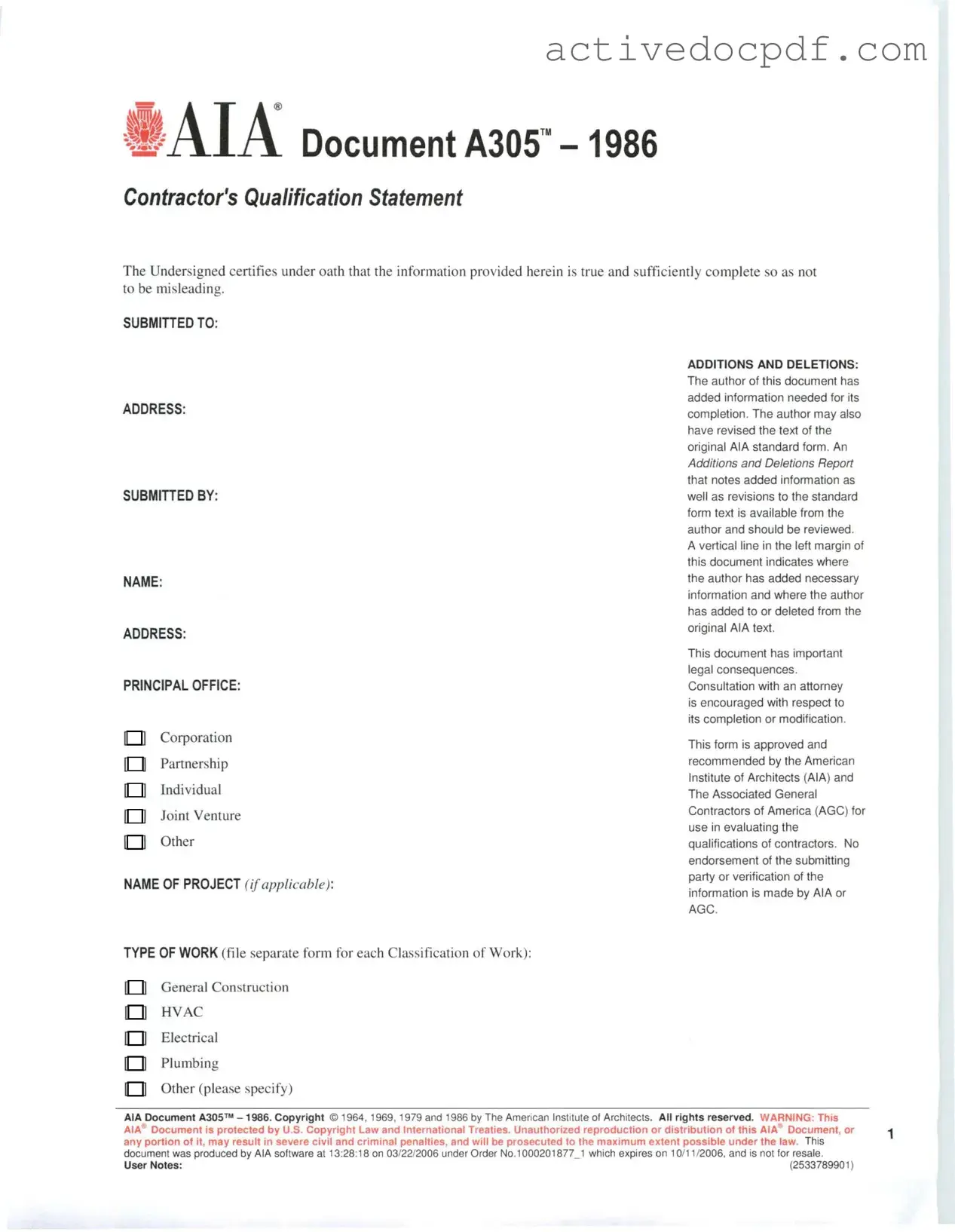The AIA A305 form, also known as the Contractor's Qualification Statement, is a document used in the construction industry. It provides a way for contractors to present their qualifications to potential clients or project owners. This form typically includes information about the contractor's experience, financial stability, and capabilities, allowing project owners to assess whether a contractor is suitable for a particular project.
The AIA A305 form is primarily intended for contractors who are bidding on construction projects. General contractors, subcontractors, and specialty contractors can all benefit from completing this form. By providing comprehensive information about their qualifications, contractors can enhance their chances of being selected for a project.
The AIA A305 form typically includes several key sections, such as:
-
Company Information:
Basic details about the contractor, including the business name, address, and contact information.
-
Experience:
A summary of past projects, including types of work completed and relevant experience in the industry.
-
Financial Information:
Information about the contractor's financial stability, including references and credit history.
-
Staffing:
Details about the contractor's workforce, including qualifications and experience of key personnel.
During the bidding process, project owners often require contractors to submit the AIA A305 form along with their proposals. This allows the owners to evaluate the qualifications of each contractor. The information provided helps them make informed decisions about which contractor is best suited for the project. A well-completed A305 form can significantly enhance a contractor's chances of being awarded the contract.
While the AIA A305 form is not legally mandatory, many project owners and construction managers require it as part of their qualification process. It serves as a standard tool for assessing contractor qualifications. If a potential client requests the form, it is advisable for contractors to complete it to remain competitive in the bidding process.
The AIA A305 form can be obtained from the American Institute of Architects (AIA) website or through various construction industry resources. It is often available in both digital and printable formats. Contractors should ensure they are using the most current version of the form to comply with industry standards.
